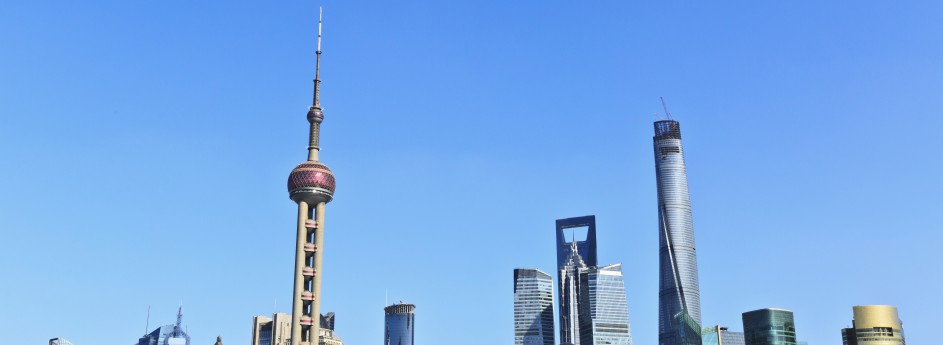Quebec Premier: Won’t Lecture the Chinese
Quebec Premier Philippe Couillard, in Shanghai on a trade mission with two other Canadian premiers, said he has no intention of lecturing his Chinese hosts on ‘human rights’. Particularly intriguing is his statement at the bottom. Yes indeed, try to provide for the citizens of and govern a country 41 times the size of Canada; Beijing’s population alone is 2/3 of Canada.
On Sunday, Couillard said he was in China mostly to talk about greater “investment and collaboration.”
Couillard said it’s important to tread lightly, since China has its own unique culture and has changed a lot in recent years.
“I don’t think you need to give lessons when visiting other countries. You have to listen to the point of view of your hosts on these questions. And we must also realize the tremendous progress that has been made in China in the last 25-30 years,” he said.
“You have to see it also in the context of Chinese civilization, which is a very ancient civilization, where things are moving, but they move at their own pace.”
As well, Couillard said China could play a major role in Quebec’s economic growth.
“We need to bring in capital, we need private investment in Quebec, and there is a lot of capital available here in China and there’s interest in investing it,” he said.
Besides attracting Chinese investment, Couillard said he wants to generate interest in Quebec exports. Quebec exports to China have jumped 130 per cent since 2009 and now total $2.6 billion annually.
The Quebec delegation totals nearly 150 people, with representatives mostly from the business sector but also from educational and cultural fields.
Couillard said Quebec could learn a lot from China, especially in the context of how to combine economic development while managing such a complex country.
“We have a much less complex country… imagine here, in a country of 1.3 billion people, the challenge of ensuring harmonious development, and encouraging greater social equality.”
– Canadian Press
US Should Work With China’s AIIB: Guardian
This Guardian editorial hits the mark:
Further to a previous post, it should be emphasized that the US and its closest allies have been slow, in fact, dragging it feet, in reforming the WB, IMF and ADB. This has proved frustrating to the Chinese (and other large developing countries) so it went ahead to form the Asia Infrastructure Investment Bank (AIIB) with 20 other developing countries. Two key US allies Australia and South Korea stood on the sidelines along with Indonesia despite being invited to the founding party.
Needless to say, there remains a great need for infrastructural development in Asia. The US should not take a dim, zero-sum view of the relationship between US/EU/Japan led institutions and the AIIB. In many ways, the various development institutions can complement each other for the betterment of Asia. If the US and Japan continue to be obstinate, the AIIB will only grow in influence at the expense of multilateral financial institutions that they lead.
HK Student Protestors Were Trained By Foreigners: BBC
Here are the most relevant excerpts from the much talked about recent BBC Newsnight report on a major meeting of the Oslo Freedom Forum, which despite its name, is based in New York. At the meeting, activists disclosed that foreign-backed training of Hong Kong student protestors had been nearly 2 years in the making!
“Hong Kong protests: Activists share secrets at Oslo Freedom Forum”
While Hong Kong’s students continue their protests and stumbling negotiations with the territory’s authorities, democracy activists from around the world, who have helped organise their struggle, gather together.
‘Trained demonstrators’
…However, far from being impromptu demonstrations, it is an open secret at this meeting in Norway that plans were hatched for the demonstrations nearly two years ago.
The ideas was to use non-violent action as a “weapon of mass destruction” to challenge the Chinese government.
Organisers prepared a plan to persuade 10,000 people on to the streets, to occupy roads in central Hong Kong, back in January 2013.
They believed that China’s moves to control the Hong Kong election would provide a flashpoint where civil disobedience could be effective, and planned accordingly.
Their strategies were not just to plan the timing and nature of the demonstrations, but also how they would be run.
BBC Newsnight has been told many of those involved in the demonstrations, perhaps more than 1,000 of them, have been given specific training to help make the campaign as effective as possible.
‘New world race’
Jianili Yang, a Chinese academic, was part of the violent protests in Tiananmen Square 25 years ago. He has been advising the Hong Kong demonstrators on an almost hourly basis.
He says that the students are better organised than the Tiananmen protesters ever were, with clearer, more effective structures for their action and clearer goals about what they are trying to achieve.
Jamila Raqib, the executive director of the Albert Einstein Institution in New York, a human rights organisation, says: “Protesters were taught how to behave during a protest.
“How to keep ranks, how to speak to police, how to manage their own movement, how to use marshals in their movement, people who are specially trained.
“It was also how to behave when arrested – practical things like the need for food and water, movement can last longer when people are taken care of, and also how to manage a water cannon being used against you, and other types of police violence.”



